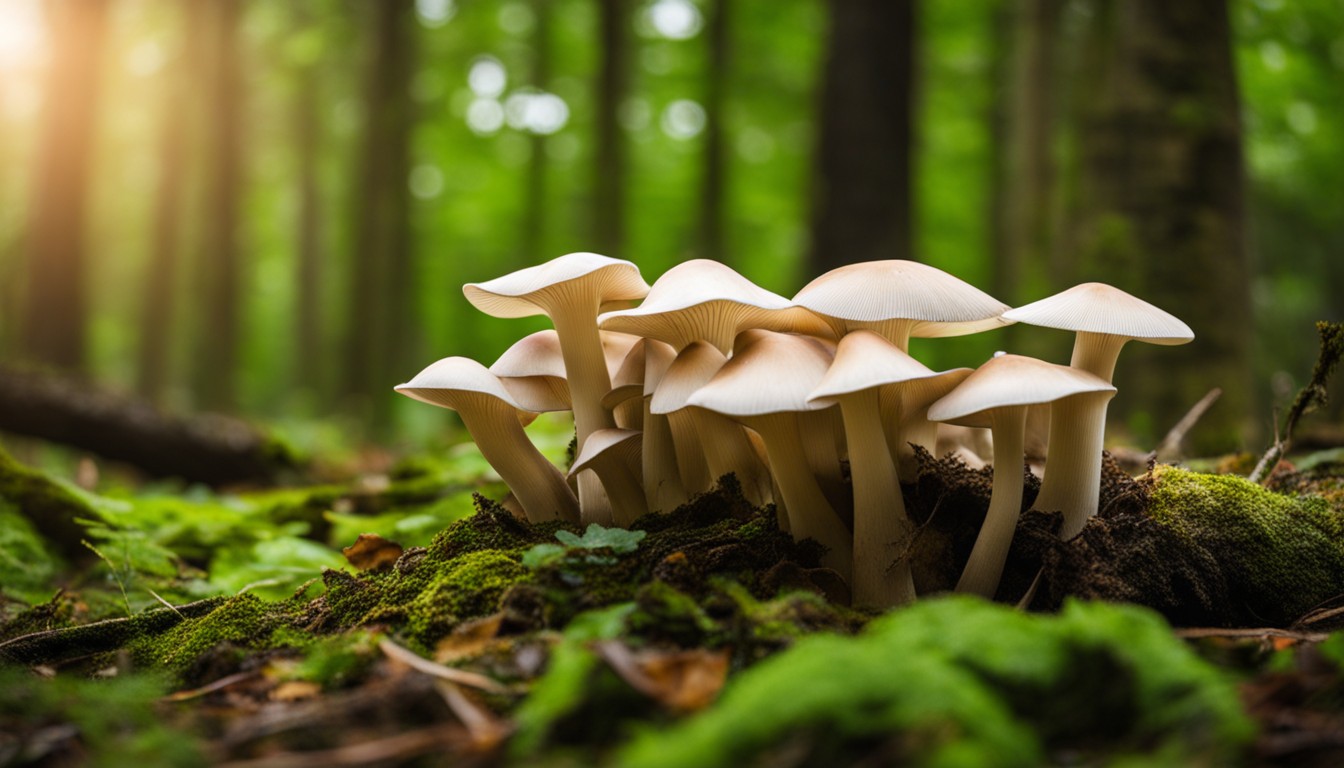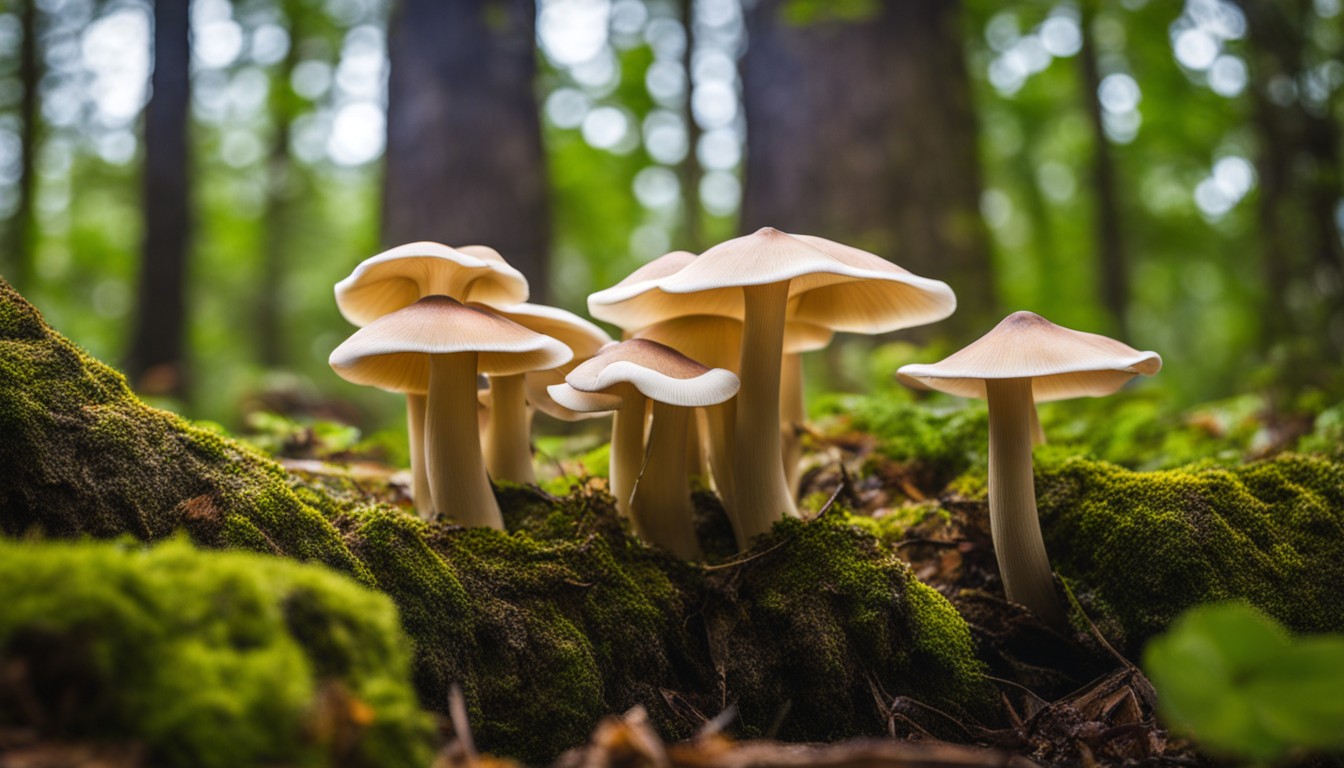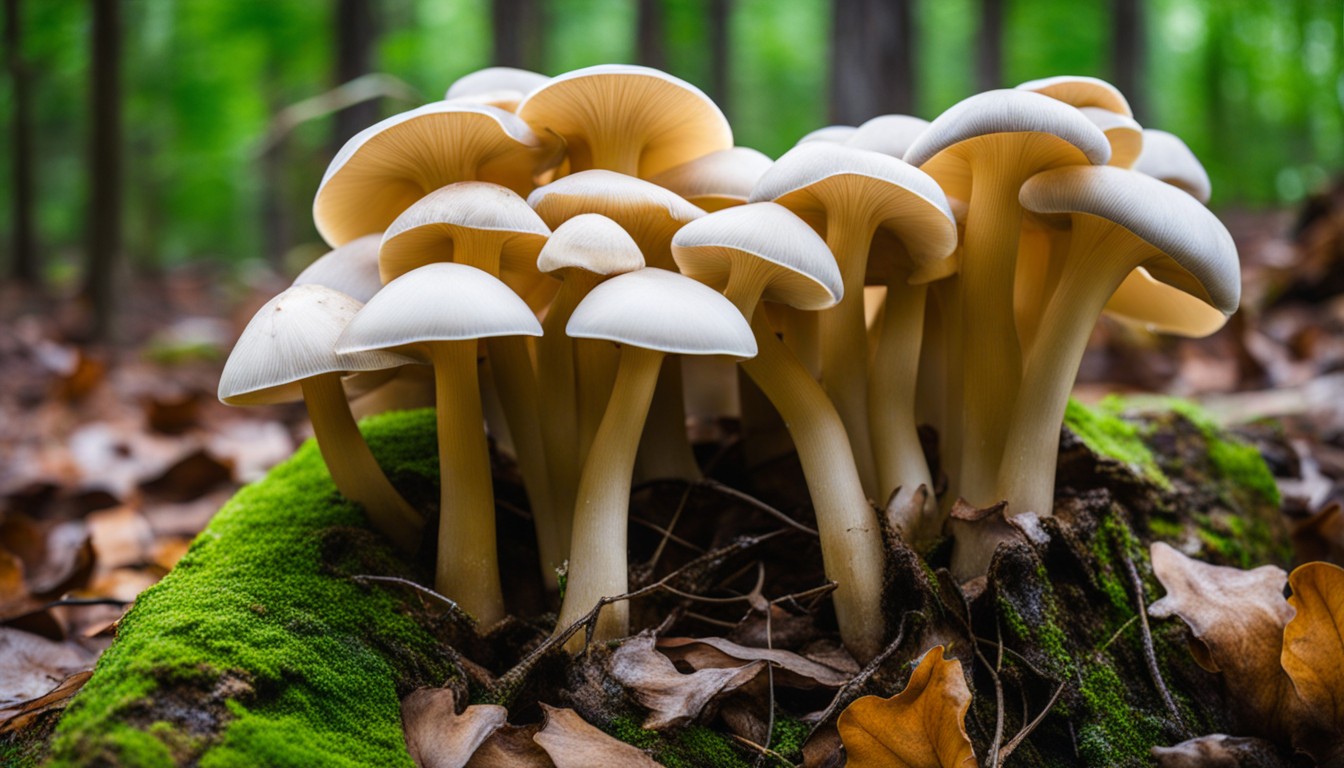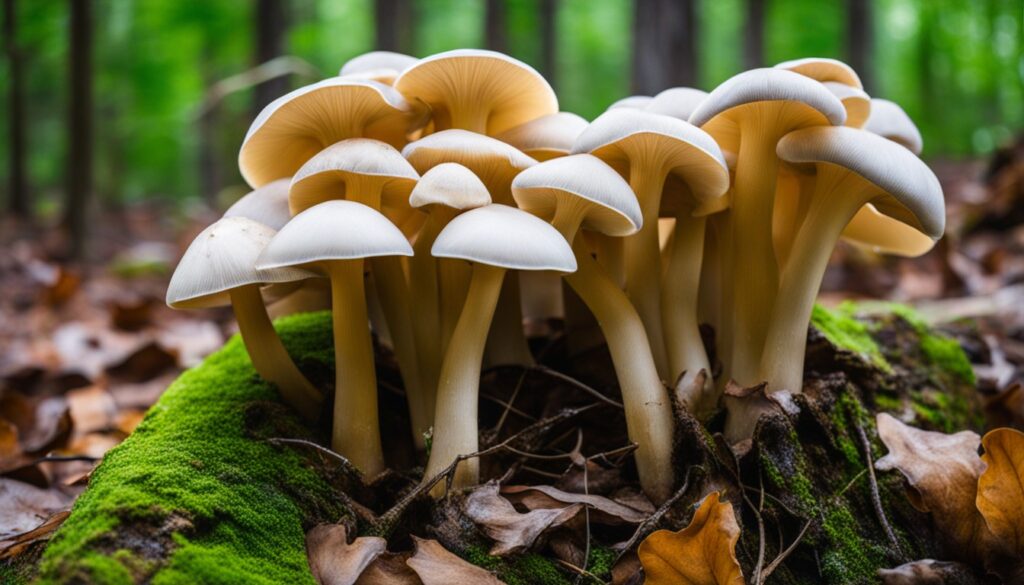“Mushrooms of Alabama: Exploring the Fungi of the Southern State” is a detailed and engaging blog post that aims to educate readers about the vast array of mushrooms found in the beautiful state of Alabama. From the towering forests to the hidden corners of parks and nature reserves, Alabama offers a diverse habitat for a wide variety of mushroom species. This comprehensive guide not only provides information on identification, habitat, and seasonality of these mushrooms but also includes captivating anecdotes and insights into the cultural significance of mushrooms in Alabama. Whether you’re a mycology enthusiast, a nature lover, or simply curious about the wonders of the natural world, this blog post is a valuable resource that will deepen your understanding and appreciation of the mushrooms that grace Alabama’s landscapes.
Types of Mushrooms Found in Alabama
Venturing into the forests of Alabama uncovers a rich tapestry of diverse fungi. On your journey, you’ll encounter edible varieties such as morels and chanterelles, and also perilous species like the death cap and destroying angel. Furthermore, the state is home to some rare and endangered mushrooms, underscoring the significant biodiversity in this southern state.
Alabama’s rich mycological landscape offers diverse fungi, from edible varieties to hazardous species, marking it as a significant hub of mushroom biodiversity.
Not just a treasure trove for mushroom enthusiasts, Alabama boasts an impressive variety of fungi. This vibrant mycological landscape hosts species ranging from the common, edible white button to the hazardous fly agaric, and even includes some seldom-seen species, solidifying Alabama’s position on the map for mushroom diversity.
Edible Mushroom Species
Navigating the world of delectable fungi in Alabama reveals a treasure trove of edible species. From the forest floor to the dinner plate, these mushrooms cultivated in the heart of Alabama offer unique flavors and textures.
- Morel: Prized for its honeycomb-like cap and rich flavor.
- Chanterelle: Known for its golden hue and fruity aroma.
- Puffball: Easily recognized by its white, round body and soft texture.
- Hen of the Woods: Esteemed for its earthy flavor and feathery appearance.
- Shiitake: An Asian variety largely cultivated for its meaty texture and umami-rich taste.
- Oyster Mushrooms: Known for its delicate flavor and gill-like structure.
Poisonous Mushroom Species
In Alabama, several mushroom species must be avoided due to their toxicity. Misidentifying these could prove fatal.
- Death Cap (Amanita phalloides): With a deceiving appearance, this mushroom is highly poisonous and often misidentified as an edible variety.
- Destroying Angel (Amanita virosa): White and deceptively attractive, consumption of this species could lead to severe illness or even death.
- Autumn Skullcap (Galerina marginata): Found in damp logging sites, this non-edible species contains a deadly toxin.
- Deadly Galerina (Galerina venenata): Generally growing on decaying wood, it possesses strong toxic properties.
- False Morel (Gyromitra esculenta): Its enticing look can mislead mushroom hunters, but it is harmful if eaten raw or improperly cooked.
Rare and Endangered Mushroom Species
In Alabama, several mushroom species are labeled as rare or endangered due to various environmental challenges and human activities. Conservation organizations are diligently working towards the preservation of these remarkable species.
- Monotropa uniflora: A rare, non-photosynthesizing plant that feeds off fungi and tree roots.
- Dendrocollybia racemosa: An extremely rare and endangered mushroom, often found on decaying conifer logs.
- Cantharellus californicus: A rare chanterelle variety, notably found in Alabama’s oak forests.
- Psilocybe ovoideocystidiata: A psychoactive mushroom, rarely found due to strict regulatory controls.
Important Tips for Mushroom Hunting in Alabama

Fungi can hold tantalizing secrets for those patient enough to seek them out; yet, for both beginners and veterans mushroom hunting in Alabama, safety and locality’s knowledge are paramount. Understand local laws and regulations, observe safety precautions, and develop a deep understanding of various mushroom habitats. Recognize various species accurately and be adept at both picking and storing them efficiently for a satisfying and fruitful foray.
Understanding Local Laws and Regulations
Before you set out on any mushroom hunting journey in Alabama, ensure you are well-acquainted with the state’s laws and regulations pertaining to the activity. Your knowledge of the legal framework for mushroom foraging will serve as your guide throughout this culinary adventure.
- Understanding states’ rules on mushroom hunting
- Learning specific restrictions on foraging in protected and private lands
- Acquiring the necessary permits for mushroom collecting
- Ensuring awareness of laws protecting rare and endangered fungal species
- Familiarizing oneself with Alabama’s ‘Leave No Trace’ policies
Safety Precautions for Mushroom Hunting
Precautionary measures indeed heighten the safety of mushroom hunting in Alabama. It’s advisable to avoid hunting alone, and better to have a knowledgeable companion for safe identification and location reaching.
Avoid touching unfamiliar and suspected toxic mushrooms, as some could be fatal if ingested or even touched. Skin-safe gloves and equipment are smart suggestions to adopt.
Ingesting wild mushrooms without proper identification can lead to severe health issues. Stick to well-known varieties or those identified by an expert to ensure they are safe for consumption.
Carrying an emergency kit, including a first-aid set, an insect repellent and whistle, forms part of the vital safety gear. Being prepared for potential risks can make the outing safer.
Good hydration is essential while in the woods as hunting can be physically demanding. Therefore, carrying enough water along with easily digestible food enhances the foraging experience in Alabama.
Location and Habitat Research
Unlocking the secrets to mushroom habitats is essential for successful hunting in Alabama. Know that they predominantly thrive in moist areas near hardwoods, conifers, and decaying logs.
For investigating potential growth locations, consider online research, local mycological societies, and nature walks. Additionally, documenting previous hunting spots and their conditions can be a fruitful method.
Proper Mushroom Identification
Correct identification of mushrooms in Alabama is an art that demands keen observation skills, knowledge of mycology, and attention to minute details. Through practice, you can master the process, expanding your understanding of the state’s diverse fungal flora.
Ensuring accurate mushroom identification is a safety concern that shouldn’t be taken lightly in Alabama. Misjudging an edible species for a toxic one can potentially lead to grave consequences, underscoring the importance of correct classification for a pleasant, hazard-free mushroom foraging experience.
Collecting and Storing Mushrooms
To collect mushrooms properly in Alabama, use a non-plastic container like a canvas or paper bag. These materials allow air circulation which can prevent premature spoiling. Avoid picking by pulling on the stem; use a knife to cut the stem instead. This ensures the underground element remains intact and promotes future growth.
Once collected, segregating mushrooms is crucial. Keep different species separate as some produce strong flavors that can pervade others. Keep edible and potentially harmful species apart as toxins can transfer.
When storing, keep in mind that edible mushrooms should be consumed fresh within a week of harvest. Store them in the main compartment of your fridge in a paper bag with loose folds. This allows for some humidity control, hindering the growth of molds.
For long-term storage, consider home canning, pickling, or drying techniques. Keep in mind that mushrooms should be thoroughly cleaned before any preservation method, and some, like wild Morels, should be cooked prior to preserving to deactivate any potential toxins.
Best Places for Mushroom Hunting in Alabama

Venture into Alabama’s vast expanses and uncover premier mushroom hunting spots brimming with a rich variety of fungi. Oak Mountain State Park, Bankhead National Forest, Cheaha State Park, Wheeler National Wildlife Refuge, and Sipsey Wilderness await eager mycophiles on a journey of discovery.
Every nook in Alabama, from verdant forests to meandering river valleys, nurtures a diverse fungi community. Unravel the state’s biodiversity as you traverse its varied terrains, each fostering unique mushroom species, making the marvel of mushroom hunting in Alabama an unforgettable experience.
Oak Mountain State Park
Oak Mountain State Park, a stone’s throw from Birmingham, offers an exquisite setting for mushroom hunters, embracing the natural riches of Alabama’s diverse ecosystems. Meandering paths lead to mycological delights, with the park’s wet climate fostering optimal conditions for fungi growth.
A veritable tapestry of native mushrooms garnishes the park, with the damp woodland floors providing an idyllic home for various species. As the leaves part, revealing their fungal treasures, visitors can discover an array of species, each with different hues and forms, enhancing Alabama’s mycological biodiversity.
Bankhead National Forest
Bankhead National Forest, located in northwestern Alabama, is beloved by mushroom enthusiasts for its extensive variety of fungi. A hunting ground rich in secret treasures, the forest trails hidden and rare species of mushrooms waiting to be discovered.
While wandering under its towering southern pines and oaks, be ready to spot enchanting mushrooms often found in symbiosis with these trees. The intricate relationship they share with the forest vegetation broadens the diversity of the fungal kingdom found here.
In the radiant light filtering through the dense canopy, one can discover an assorted palette of mushrooms. It ranges from the edible Chanterelles to the uniquely shaped Lion’s Mane, asserting Bankhead’s position as a mushroom hunting ground.
The Forest spans across acres of unique ecosystems, hosting mushrooms thriving in diverse habitats. It not only provides a hunting adventure but also offers a holistic understanding of the complex and hidden world of fungi.
Cheaha State Park
At Cheaha State Park, biodiversity abounds in the form of varied mushroom species dotting the landscape. The high elevation mixed with dense forest creates a unique environment for a rich fungi population.
A haven for mushroom enthusiasts, Cheaha State Park promises an enriching experience, with a diverse ecosystem boosting the growth and presence of a wide range of mushroom species to discover and explore.
Wheeler National Wildlife Refuge
Fungi at Wheeler National Wildlife Refuge are as diverse as the park’s sprawling ecosystem, offering mushroom hunters a broad range to explore. From meadows to marshes, the refuge caters to a unique blend of mushroom species providing a rich spectacle of fungi diversity.
Wildlife aficionados and fungi enthusiasts will find an unexpected intersection at Wheeler Wildlife Refuge. The habitats shared by various animals and fungi create an enriching hunting ground for mushroom collectors.
A deeper examination of the refuge can reveal a subject of great interest: the relationship between native fauna and fungi. The dynamic intertwined existence paints a thrilling backdrop for mushroom expeditions.
The remarkable mushroom diversity, influenced by the refuge’s differing habitats, opens doors to potential scientific studies and fungal conservation efforts. This added dimension makes Wheeler Wildlife Refuge an attractive location for mushroom hunters.
Whether you’re after more common species or hoping to chance upon a rare exotic, Wheeler National Wildlife Refuge may serve your mushroom hunting ambitions while satiating your thirst for exploration and wildlife interaction.
Sipsey Wilderness
Sipsey Wilderness, dubbed as the ‘Land of a Thousand Waterfalls,’ isn’t just known for its cascading beauties, but also a treasure trove of diverse mushrooms. Hikers and mycologists often stumble upon a range of different wild mushroom species, thanks to the area’s moisture-laden environment.
Its moss-heavy floors and damp woodlands provide an optimal habitat for many fungi species. A careful glance beneath the forest leaf litter might reveal exciting finds like the subtly beautiful Turkey Tail or the striking Destroying Angel.
But it’s not just the common species thriving here. Rarities like the bioluminescent Ghost Mushroom and delicate Lion’s Mane Mushroom have been reported, offering an exhilarating and rewarding experience for fungi enthusiasts who explore Sipsey’s trails.
Despite the wilderness area’s inviting mushroom diversity, remember the cardinal rule of mushroom hunting: Never consume anything you can’t confidently identify. Some species in Sipsey, like the Deadly Galerina, can be harmful—even fatal—if ingested.
Fungi exploration in Sipsey Wilderness is truly an adventure for the senses, melding the thrill of discovery with the serene beauty of nature, all whilst heightening environmental awareness and fostering a deeper appreciation for mycelium magic.
Hunting vs Cultivating Mushrooms: Pros and Cons

The debate in the fungi world swings between the thrill and knowledge gained from mushroom hunting, and the convenience and control of cultivation in Alabama. Each method brings unique advantages and limitations. Balancing the scales between foraging and farming mushrooms in Alabama involves understanding the trade-offs, including factors like time investment, environmental impact, and species availability.
- Hunting advantages: Access to a large variety of species, knowledge of mushroom habitats, and enjoyment of nature’s serenity.
- Hunting hindrances: Time-consuming, possible legal restrictions, potential danger from misidentification or consuming unidentified species.
- Cultivation advantages: Control over growing conditions, predictable harvests, and convenience of not travelling.
- Cultivation limitations: Limited species available for cultivation, requirement for specific and monitored conditions, potential for fungal diseases.
Interesting Facts About Alabama’s Mushroom Diversity
Alabama’s world of fungi is a diverse one, blooming with breathtaking disparities and colorus, making every foray into the woods a thrilling adventure. This southern state hosts a fascinating array of mushroom species that range from the mundane to the magical, teeming with different shapes, sizes, and hues.
- Alabama is known to host over 10,000 species of fungi, from bread mold to mushrooms.
- One notable variety is the Jack-o’-lantern mushroom (Omphalotus olearius), glowing in the dark and found in clusters near mature oak trees in Alabama.
- Alabama’s climate, rich soils and diversity of tree species engender a wide range of mushroom species.
- The diversity extends to color with mushrooms found in Alabama in hues of red, orange, yellow, blue, green, brown, and more.
- Alabama’s fungi play key roles in the ecosystem, aiding in the decomposition of organic matter and recycling of nutrients.
Delicious and Deadly: A FAQ on Mushrooms of Alabama
Uncover the wonders of Alabama’s mushroom kingdom with this informative FAQ. From delectable edibles to hazardous species, here are answers to your burning questions about mushroom hunting in Alabama.
Q: Are there edible mushrooms in Alabama?
A: Yes, Alabama is home to a variety of edible mushrooms, such as morels, chanterelles, oyster mushrooms, and chicken-of-the-woods. These culinary delights can be found in the forests, woodlands, and even urban areas of the state. However, caution must be exercised to accurately identify and differentiate them from toxic varieties.
Q: Can I forage for mushrooms in Alabama’s state parks?
A: Mushroom foraging is generally allowed in Alabama’s state parks, which provide a diverse range of habitats for mushroom growth. However, it is essential to check with park authorities regarding any specific regulations or restrictions before collecting mushrooms. Respect park rules, avoid damaging habitats, and only harvest in moderation to preserve the delicate balance of ecosystems.
Q: What should I do if I accidentally consume a poisonous mushroom?
A: If you suspect mushroom poisoning, seek medical attention immediately. It’s crucial to act quickly as some poisonous mushrooms can cause severe health complications. For identification purposes, try to preserve a sample of the mushroom by wrapping it in a moist paper towel and storing it in a breathable container. This will assist medical professionals in providing prompt and accurate treatment.
Q: Are there any rare or endangered mushroom species in Alabama?
A: Yes, Alabama has several rare and endangered mushroom species that require special attention and protection. These include the Alabama beech false morel and the Cahaba River morel, which are unique to the state. It is crucial to respect their habitats and refrain from picking or disturbing them. Documenting sightings and reporting them to local mycology organizations or conservation authorities can contribute to their preservation efforts.
Q: What are some tips for safe mushroom hunting in Alabama?
A: To ensure a safe and successful mushroom hunt, educate yourself about different mushroom species by attending workshops or joining a local mycology club for guidance and knowledge-sharing. Always carry a reliable field guide or use a trusted mobile app to assist with identification. Remember, never consume a mushroom unless you are certain of its identification. When foraging, practice sustainable harvesting by only taking mature specimens and leaving behind young or damaged mushrooms to support future growth.
Q: Can I sell the mushrooms I collect in Alabama?
A: While foraging for personal use is generally permitted, selling wild mushrooms in Alabama may require specific permits and licenses. The regulations surrounding the sale of wild mushrooms vary based on factors such as location, quantity, and intended market. It is advisable to consult the Alabama Department of Conservation and Natural Resources or relevant authorities for the most up-to-date regulations and to ensure compliance with legal requirements.
Embark on an enchanting journey through Alabama’s mushroom-filled landscapes, but remember to exercise caution, respect nature, stay informed, and indulge in the delights that the Mushroom of Alabama has to offer. Happy mushroom hunting!
Conclusion
Encapsulating Alabama’s Fungi Phenomena, we’ve explored an array of mushroom species, from edible to poisonous, and even rare and endangered ones. Our journey took us through the dense hardwood forests of Oak Mountain State Park to the riparian zones of Wheeler National Wildlife Refuge.
Final Thoughts: The adventure of hunting or even cultivating your own mushrooms in Alabama presents a unique, enlightening experience. By adhering to local laws, ensuring safety, and learning to correctly identify and store mushrooms, we uncover an enthralling dimension of Alabama’s biodiversity.
- Be aware of Alabama’s mushroom diversity
- Edible, poisonous, rare and endangered species exist
- Oak Mountain State Park and Wheeler National Wildlife Refuge are ideal for mushroom hunting
- Understanding laws, ensuring safety, and proper identification are crucial for mushroom hunting.

